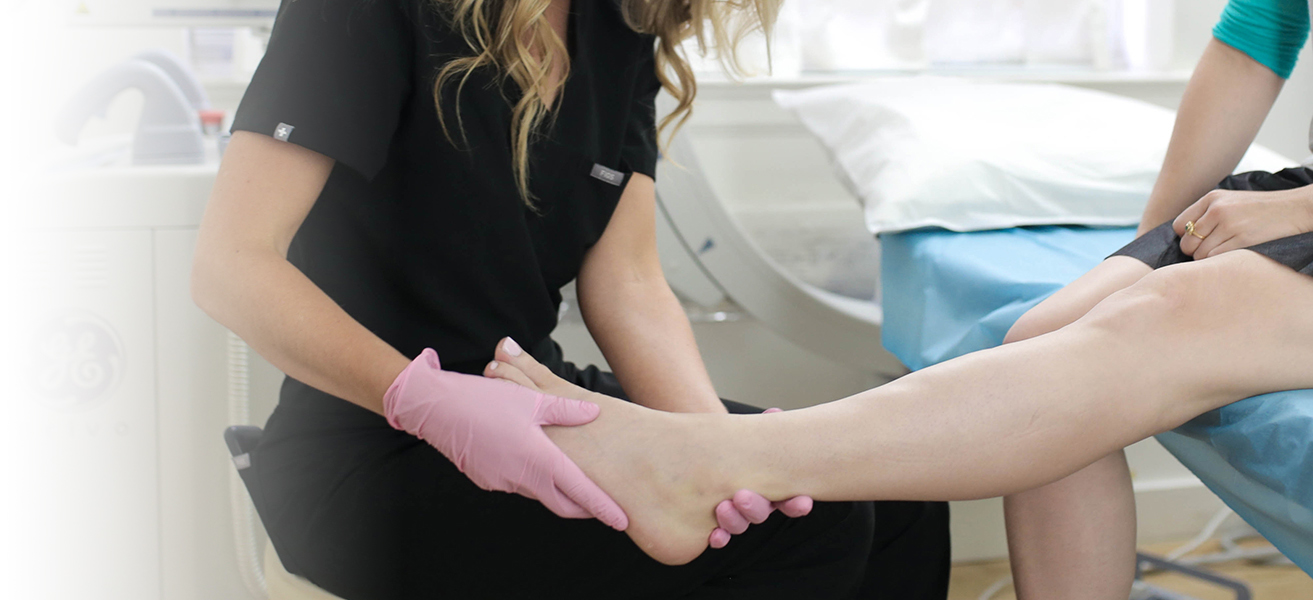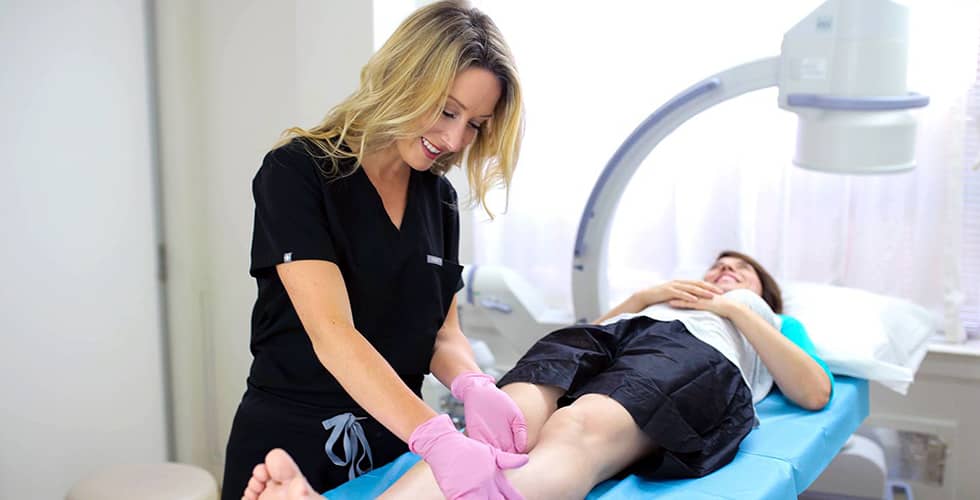Overview of the vein treatment process at our NY vein clinic.
Vein Treatment Clinic is currently the best NY Vein Clinic in Manhattan, New York. Our vein clinic has a strong reputation as one of New York’s most accomplished vein centers, with some of the best Harvard-trained vein doctors in the country.
At Vein Treatment Clinic, we strive to provide the best varicose veins and spider veins treatments, using the latest technologies and minimally invasive procedures. Our phlebologists diagnose the root cause of your vein disease to curate the ideal plan for varicose vein treatment in Manhattan.

- Step 1: During the initial consultation, our vein specialist will look for signs and symptoms of vein disease.
- Step 2: During the diagnosis phase, our phlebologist will run a vascular imaging test to diagnose the root cause of your varicose veins and spider veins.
- Step 3: The vein doctor will curate a vein treatment plan and discuss it with you.
- Step 4: The vein specialist will schedule the best varicose veins treatment in Manhattan.
- Step 5: After the primary vein treatment, the vein doctors will treat the superficial varicose veins and spider veins.
Now that you have a brief overview of our vein clinic’s vein treatment process, please continue reading for a detailed discussion of varicose vein treatment at our NY vein clinic.

Initial consultation with a vein specialist near me.
The first step of the varicose vein treatment process is to consult your vein doctor or phlebologist. Our vein doctors will examine your varicose veins and spider veins to determine if you may be suffering from underlying vein disease.
The vein specialist will also ask you to describe the symptoms you’re experiencing. Some of the most common symptoms of vein disease are frequent leg cramps, leg heaviness, throbbing leg veins, and restless legs syndrome. These symptoms usually get worse at the end of the day or after long periods of sitting or standing still.
Vascular imaging to diagnose the root cause of varicose veins and spider veins.
Varicose veins and spider veins are often, though not always, caused by underlying chronic venous insufficiency. This is a severe medical condition in which your vein valves collapse, which causes blood to flow backward and accumulate in your leg veins. Over time, the continued accumulation of blood in your leg veins leads to vein dilation and the formation of varicose veins and spider veins.
If your varicose veins and spider veins are caused by vein disease, the vein doctors will need to treat the root cause of varicose veins. If they simply remove the superficial varicose veins and spider veins, they will eventually come back. That’s why it’s crucial for the vein doctors to diagnose whether you have underlying vein disease. That’s where Duplex Ultrasound comes in.
Duplex Ultrasound is one of the best vascular imaging tests available. This vascular imaging test allows the phlebologist to visualize the blood flow in your leg veins on a computer screen. As such, if you’re suffering from venous reflux, i.e., if blood is flowing backward in your leg veins, the vein doctor will identify it. After diagnosing vein disease, the vein doctor will be equipped to curate the best vein treatment plan for you.
Description of our varicose veins treatment in Manhattan.
If you’re suffering from vein disease, the vein doctor will recommend one of the following minimally invasive varicose vein treatments — radiofrequency ablation, endovenous laser ablation, and VenaSeal.
All of these minimally invasive varicose vein treatments have the same goals. They use different methods to either seal or collapse the diseased saphenous vein under ultrasound guidance. Once the diseased saphenous vein is closed, the accumulated blood reroutes to healthier veins, thus restoring smooth blood circulation to the heart.
However, the various varicose vein treatments accomplish this in different ways. Radiofrequency ablation uses thermal energy to collapse the diseased vein. Endovenous laser ablation uses laser energy to destroy the diseased saphenous vein. VenaSeal involves injecting a medical adhesive to fuse the diseased saphenous vein’s walls shut.
Radiofrequency ablation is the preferred varicose veins treatment at our NY vein clinic because it’s non-surgical, causes minimal pain or discomfort, is extremely safe, and it gets insurance coverage. Endovenous laser ablation is also just as effective, but it causes more post-procedural discomfort. VenaSeal is also highly-effective, but it doesn’t receive insurance coverage because it’s a relatively new varicose vein treatment.
Description of minimally invasive treatments for superficial varicose veins and spider veins.
After the primary varicose vein treatment, the vein doctor will schedule minimally invasive treatments for superficial varicose veins and spider veins. These are cosmetic treatments because they only remove the superficial veins without treating the underlying vein disease. As such, they’re not eligible for insurance coverage either.
Ambulatory phlebectomy is the best treatment for superficial varicose veins. During the ambulatory phlebectomy procedure, the phlebologist will remove the superficial varicose veins through incisions on the surface of the skin.
Sclerotherapy is the best spider vein treatment. During sclerotherapy, the spider vein specialist will inject a medicine called sclerosant into the spider veins, thus sealing their vein walls. Consequently, the spider veins will turn into scar tissues that will eventually fade away.
Consult our varicose vein treatment center today.
As we’ve mentioned previously, Vein Treatment Clinic has a strong reputation as one of the best Manhattan vein clinics. Our vein treatment center is highly accessible because it’s just across the street from Grand Central Station. For more information, please consult our NY vein clinic today.









